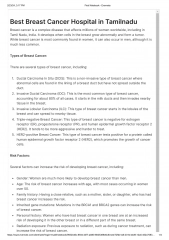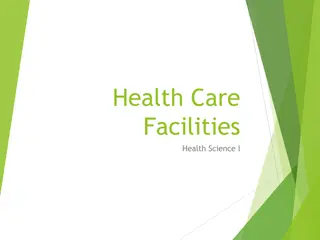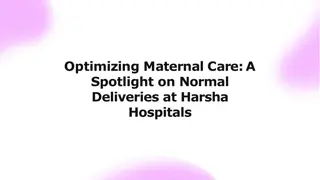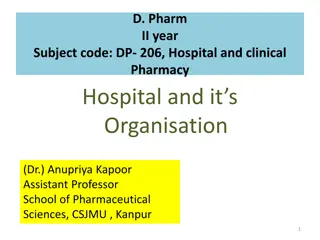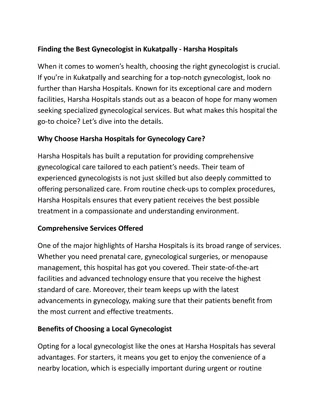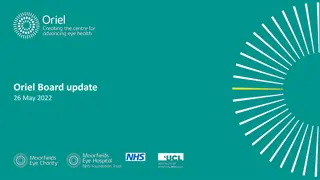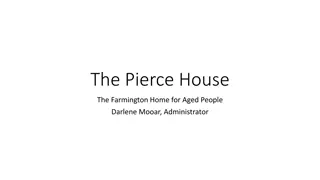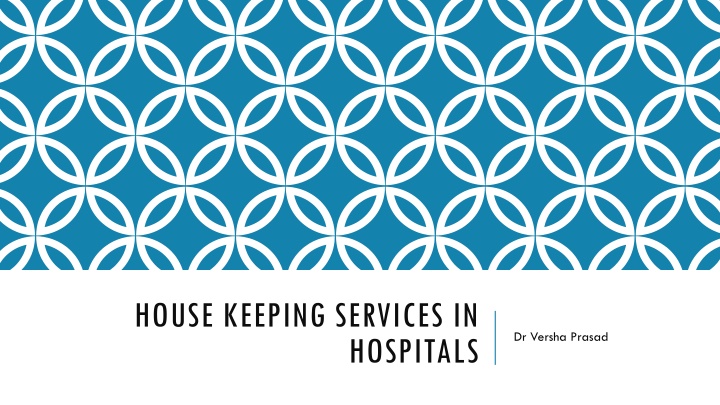
Importance of Housekeeping Services in Hospitals for Infection Control
Housekeeping services play a crucial role in maintaining cleanliness and reducing the spread of infectious diseases in hospitals. By focusing on cleaning, disinfecting, and following strict protocols, housekeeping staff help create a safe and healthy environment for patients, visitors, and healthcare workers.
Download Presentation

Please find below an Image/Link to download the presentation.
The content on the website is provided AS IS for your information and personal use only. It may not be sold, licensed, or shared on other websites without obtaining consent from the author. If you encounter any issues during the download, it is possible that the publisher has removed the file from their server.
You are allowed to download the files provided on this website for personal or commercial use, subject to the condition that they are used lawfully. All files are the property of their respective owners.
The content on the website is provided AS IS for your information and personal use only. It may not be sold, licensed, or shared on other websites without obtaining consent from the author.
E N D
Presentation Transcript
HOUSE KEEPING SERVICES IN Dr Versha Prasad HOSPITALS
HOUSE KEEPING SERVICES Hospitals are full of sick people wanting to get better , so must have the cleanest surroundings. Germs like sickness and sickness likes germs. They feed off each other. Keeping hospital rooms and common areas clean with regular housekeeping services is healthy for patients, visitors, and hospital staff. To keep a healthcare environment like a hospital free from infections, cleanliness is paramount. Having housekeeping services staff working hand in hand with other staff and patients can keep infections out. Housekeepers play an essential role in the overall environmental health of a hospital.
INFECTIOUS DISEASES Some diseases can spreads very rapidly. Housekeeping services in a hospital help to control the spread of those diseases. Bacteria can survive in nearly every place and space. It can be found on bedrails, curtains, call buttons everywhere. And it survives for a long time. If someone touches these surfaces and fails to wash his or her hands, the bacteria spreads to every area he or she touches. In fact, superbugs, or antibiotic-resistant bacteria, can survive for months on surfaces. These potentially deadly pests have also found their way into hospitals.
CLEANING VS. DISINFECTING Cleaning and disinfecting aren t the same at all. Cleaning should happen before disinfecting. When housekeeping staff clean, they use soap, water, enzymes, and a scrubbing action to remove dirt, dust, and foreign matter from objects. Disinfection won t be adequate if the cleaning isn t up to par. As a rule of thumb, hospital housekeeping services usually use this formula when cleaning: No smudges, no dust, no odours, no spots equals clean. Disinfectants are used to sanitize clean areas. Sanitizers are usually chlorine, phenol or iodine based and are usually used in food prep locations like kitchens where food-borne pathogen levels must at safe levels.
OBJECTIVES OF HOUSEKEEPING DEPARTMENT To attain and maintain high standards of cleanliness and general upkeep. To train, control and supervise staff under its establishment. To attain good relations with other departments. To ensure safety and security of all staff under its department and to keep superior authorities informed about day to day activities. Control and issue of cleaning materials and equipment. To maintain official records on staffing, cleaning materials and equipment.
TRANSMISSION INVOLVES: Presence of an infectious agent (e.g. bacterium, virus, fungus) on equipment, objects and surfaces in the health care environment. A means for the infectious agent to transfer from patient-to-patient, patient-to-staff, staff-to-patient or staff-to-staff. Presence of susceptible patients, staff and visitors.In the health care organisation, the role of environmental cleaning is important because it reduces the number and amount of infectious agents that may be present and may also eliminate routes of transfer of microorganisms from one person/object to another, thereby reducing the risk of infection.
TWO COMPONENTS FOR THE PURPOSES OF ENVIRONMENTAL CLEANING IN HOSPITALS a) Hotel component is the area of the facility that is not involved in direct patient care; this includes public areas such as lobbies and waiting rooms; offices; corridors; elevators and stairwells; and service areas. Areas designated in the hotel component are cleaned with a Hotel Clean regimen. b) The Hospital Environment and Sanitation Patients shed microorganisms into the health care environment, particularly if they are coughing, sneezing or having diarrhoea. Bacteria and viruses may survive for weeks or months on dry surfaces in the environment of the patient (the space around a patient that may be touched by the patient and may also be touched by the health care provider).
THE NATURE OF THE HEALTH CARE ORGANISATION In acute care, the patient environment is the area inside the curtain, including all items and equipment used in his/her care, as well as the bathroom that the patient uses. In intensive care units (ICUs), the patient environment is the room or bed space and items and equipment inside the room or bed space. In the nursery/neonatal setting, the patient environment is the incubator or bassinet and equipment outside the incubator/bassinet that is used for the infant. In ambulatory care, the patient environment is the immediate vicinity of the examination or treatment table or chair, and waiting areas.
THE NATURE OF THE HEALTH CARE ORGANISATION In some care environments, e.g., mental health, long-term care, paediatrics, the patient environment may be shared space, such as group rooms, dining areas, playrooms, central showers and washrooms etc. Cleaning disrupts transmission of these microorganisms from the contaminated environment to patients and health care providers. Improving cleaning practices in hospitals and other health care organisations will contribute towards controlling health care-associated infection and associated costs.
MOST COMMON HIGH TOUCH SURFACES IN THE HEALTHCARE ENVIRONMENT Following are the most common high touch surfaces in the healthcare environment, therefore due attention must be paid while cleaning them Health care organisations should have policies that include the criteria to be used when choosing furnishings and equipment for patient care areas. Items found to harbour microorganisms in the healthcare environment Bed Bed frames Bed linen Bedside table Blood pressure machine Dustbin Key board Faucet handle Couch Door handle Thermometer Patients bathroom Floor around bed Light switch Overbed table Patient lift Pen Pillow Mattress Sink


